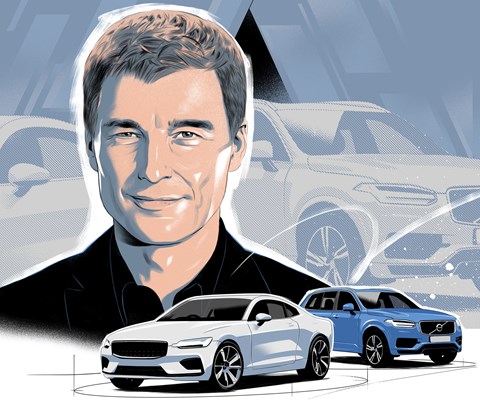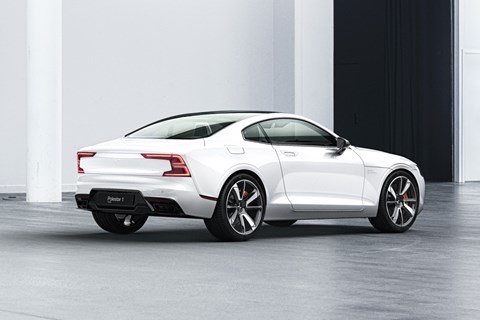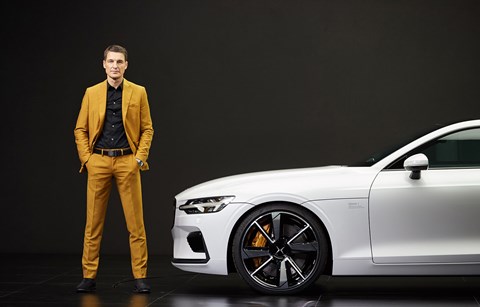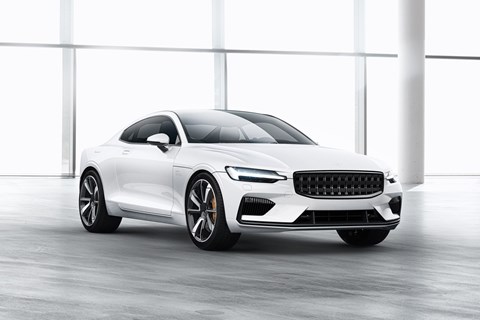
► Interviewing the Polestar CEO
► We meet Thomas Ingenlath
► The CAR magazine Inquisition
It’s no exaggeration to say Thomas Ingenlath has transformed Volvo design. Now he’s trying to revolutionise electric cars. Last year, he was appointed CEO of Polestar, Volvo’s new performance electric division.
The likeable 53-year-old German is one of the car industry’s most admired designers. The one-time RCA student had a top career at the VW Group – star cars included the Skoda Yeti – before joining Volvo, soon after the Geely takeover from Ford, in 2012. Liberated from Ford, and with generous funding from Geely, Volvo launched a new range of bespoke Volvo platforms and engines – unheard of under Ford’s stewardship. These platforms – SPA and CMA – were heavily influenced by Ingenlath and his team to ensure good proportions and stance. Ingenlath admits that one of the main lessons from his time at the VW Group was that platform sharing has the potential to seriously compromise car design.
Ingenlath was obsessive about getting the new platforms right – especially to ensure the proper front axle to A-pillar length. He was so insistent that Volvo’s recently outgoing engineering director, Peter Mertens, once said to me – only half joking – that ‘it sometimes feels like I work for Thomas’.
Ingenlath has taken all that’s good about Volvo – solid, safe, functional – and sprinkled a heavy dose of Scandinavian styling magic dust. Partly due to the new look, sales are booming. If the German makers aren’t looking anxiously over their shoulders at Volvo, they should be.
Volvo’s ambition extends to a new lower-market offshoot – Lynk & Co – and now to a new performance electric car brand.

The first Polestar, called rather straightforwardly Polestar 1 (above), is a plug-in hybrid luxury coupe that bears more than a passing resemblance to the comely Volvo Concept Coupe of 2013. It uses a version of the SPA platform and a modified T8 plug-in hybrid powertrain to boost performance and electric-only range. It will cost €150,000 (£130,000) and will be built at a rate of 500 cars a year in Polestar’s new factory in China.
See our full story on the Polestar 1 here
Not that many people will pay €150,000. Online sales will nearly all involve a monthly subscription model, like renting an iPhone from O2: ‘Monthly payments – with no deposit, insurance and servicing all included,’ says Ingenlath. This buying model will eventually include subscriptions on used Polestars.
The 1 will be Polestar’s one and only plug-in hybrid. The Polestar 2, on sale in 2020, will be a Tesla Model 3 rival, considerably cheaper and built in much higher volumes than the 1. Like all Polestars it will be Swedish engineered and Chinese manufactured, on a dedicated site next to Volvo’s existing factory in Chengdu. The Polestar 3 will be a sports SUV – priced between 1 and 2 – and Ingenlath hints it will be way sportier and more shapely than most of today’s bulky SUVs.

Future Polestars will be designed and engineered by Volvo. Polestar is a new brand from Volvo, not a totally stand-alone car maker. The Polestar ‘spaces’ – facilities where Polestars can be tested but not purchased – will be separate from any Volvo dealer.
Polestars will not simply be ‘electrified Volvos’. ‘Volvo is clearly defined by its comfort, safety and practicality,’ says Ingenlath. ‘Polestar has a licence to do what Volvo doesn’t: to design around the driver, not the passengers. Polestar is more about the individual. Also, the design expression is different. We are not bound by any convention. We can try new things.’
He wants to offer more ‘complete performance electric cars’ than any current offering. ‘Electric cars now are defined by their acceleration. That’s useless in day-to-day driving, and sometimes they’re so fast they can be frightening. We will make cars that are really enjoyable to drive in handling, steering and in overall everyday performance.’
It’s highly unusual for a car designer to become a hands-on CEO. Ingenlath was heavily involved in the early conception of Polestar. He says he really wanted to see the job through.
‘I wanted to be able to shape a new electric car company in more than just design. That was a tremendous challenge and a huge incentive. Besides, designers now work beyond the look of a car. We’re involved in brand, engineering, production, marketing, and more. I think designers are now more qualified to be CEOs than ever.’

CAR’s Curveballs: 6 questions only we would ask
Tell us about your first car
‘The first-gen VW Polo, based on the Audi 50 – an Italian design. It was a rotten car that had to be repaired every week.’
What achievement makes you most proud?
‘Being part of, and having done my bit for, Volvo over the past six years.’
What’s the best thing you’ve ever done in a car?
‘When I was at VW I drove a Lotus Elise. That car, after all the VW Group cars I’d driven, was amazing – so different, so alert. Some years later, I drove the first Tesla; the same car with an electric motor. That was also amazing.’
Tell us when you screwed up
‘In my career, during product development, I sometimes accepted decisions about proportions and technology that I knew wouldn’t look ideal [referring to his time at VW]. If the basic architecture is flawed, you can’t do anything about it as a designer.’
Supercar or classic?
‘A classic car. I’d love a Bertone Alfa GT, a Citroën DS, a little BMW 1802. And a 911. I owned an old 911 for a long time and loved it.’
What’s your favourite old Volvo,?
‘The P1800. It’s a Volvo hero. It shows that classic Volvo design is more than a brick. The Amazon was also very shapely and artistic.’
See all the Volvo reviews by CAR magazine